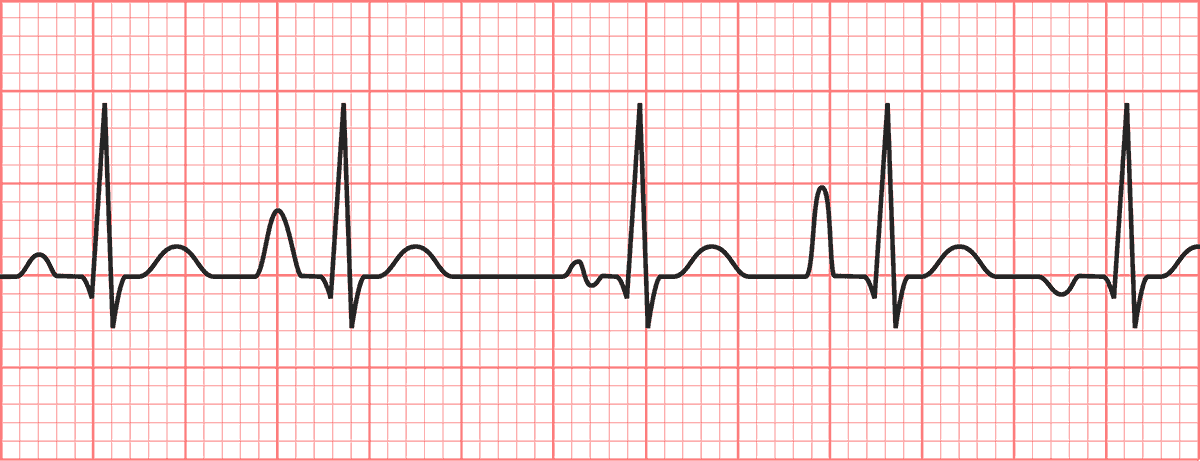FREE Basic Electrocardiogram Questions and Answers
When treating atrial fibrillation, which of the following is NOT a rate-controlling medication?
Metoprolol, diltiazem (a nonhydropyridine calcium channel blocker) and digoxin are all used to treat atrial fibrillation.
Amlodipine is a hydropyridine calcium channel blocker, which has no effect on heart rate.
On the ECG trace below, which rhythm is present?

Because the PR interval is 6 mm, or 240 ms, there is a first-degree heart block.
In a patient with a history of known AF, what would NOT be a cause of slow atrial fibrillation?
Thyrotoxicosis would increase the heart rate, increasing the likelihood of atrial fibrillation with rapid ventricular rate.
The other options would slow the heart rate and potentially cause slow AF.
Which way does lead II go on an ECG?

The correct answer is 60 degrees.
Which antiemetics would NOT cause the QT interval to lengthen?
The correct answer is metoclopramide.
Which of the following rhythm's origins is most likely?

The correct answer is atria. The rhythm is multifocal atrial tachycardia.
The rhythm is narrow complex, indicating that it originates supraventricular. The P waves are inverted, suggesting that the rhythm originates somewhere other than the sinus node.
Which of the following has the lowest chance of causing atrial fibrillation to occur?
The correct answer is pericardial effusion.